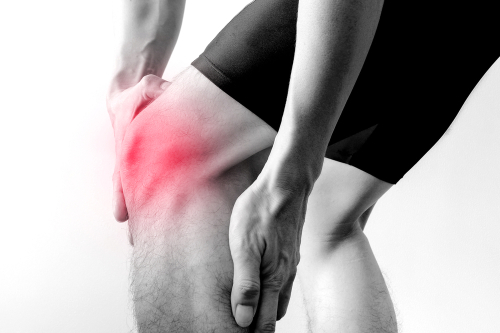Uncomfortable, debilitating, painful. Runner’s knee, also known as patellofemoral stress syndrome, is the pain you feel around and under your kneecaps. In today’s post, we’ll share expert tips about runner’s knee treatment, symptoms, and other recovery tips.

You don’t have to be a runner or an athlete to suffer from this condition. If you are starting to feel a dull and aching throb around the front of your knee, it’s time to listen to what your body is telling you.
If you haven’t had suffered this condition, there’s a high probability that you might in the near future.
This condition covers a broad classification of pain around the kneecap (also known as the patella) and the front of the knee. Because it’s a general classification, there are different types of this condition that you could be suffering from.
It’s helpful to know what type could be troubling you, so you may also get the right runner’s knee treatment to fix the condition.
The forms of runner’s knee are:
Patellofemoral Pain Syndrom
This type of runner’s knee is the most common. The pain is typically felt beneath the kneecap, in front, and around it. PFPS also tends to have more inflammation when you’re walking upstairs. The pain starts out slow. However, it can worsen over a period of months or even years.
The pain also increases when you’re sitting, and your knees are bent. The pain is more pronounced when you try to stand up from sitting in this position.
Iliotibial Band Syndrome
Even without hearing about the name, you’ve probably experienced this form of runner’s knee. The iliotibial band is a massive structure in the body that looks like a tendon. It runs down from the hips from thighs and to the knees.
When the IT band is strained or overworked, there’s pain experienced on the side of the knee, which ultimately leads to iliotibial band syndrome runner’s knee. This condition feels at its worst when you’re going down the stairs.

There’s no sensitivity felt when the kneecap is pushed down. However, there may appear a sensitive and inflamed spot on the side of the knees.
Chondromalacia Patella
Chondromalacia patella occurs when there’s limping and breaking down of the knee cartilage. There’s usually a dull and aching pain present with this form of runner’s knee. However, if there are any tingling and numbness, best to call your doctor right away to get you checked up. You may need more than runner’s knee treatment since numbness is not one of the symptoms of runner’s knee.
If you are experiencing pain down your leg or any type of pain, consult your doctor.
Causes of Runner’s Knee
This condition may be caused by a particular way an individual walks. It may also due to a structural defect. Other causes of runner’s knee include:
- Too high placement of the kneecap in the joint
- Weak thigh muscles
- Tight Achilles tendons
- Tight hamstrings
- Poor foot support
- Running or walking with your feet rolling
- Excessive physical training (jumping, walking, running, jogging, and sports such as football, basketball, soccer, etc.)
- Overuse of muscles
- Injury
Runner’s Knee Treatment
How do I recover from runner’s knee?
When you have a clearer idea of what form of runner’s knee, you have, getting the right type of runner’s knee treatment will be more comfortable.
While there are home remedies available, you can get the full effect of healing your runner’s knee with the help of a professional healthcare provider.
Runner’s knee treatment is available for anyone seeking it. And the good news is runner’s knee is curable. The first thing you need to do is see your doctor if you suspect that you may have runner’s knee.
As you’re healing, try not to do any excessive physical activities that may further strain your knee. This means dialing down running and doing gentle stretches if you’re sitting down with your knees bent for most of the day.
Key Takeaway
Our most important advice is to seek help from your doctor. Schedule a consultation right away. While it’s good to get as much as you can about health conditions, the most practical thing you can do is get in touch with your doctor.
He or she will know your medical history and overall condition. As such, your doctor is capable of providing the best runner’s knee treatment tailored to help you heal and recover.

I am a Family Doctor in Atlanta, GA. Married to the beautiful, Susan with two sweet girls. I enjoy golfing on occasion.
You might be wondering what my domain name has to do with my profession. About three years ago, my uncle, who has many domains, created this one to help others buy a knock-off brand of sports sunglasses.
I mentioned to him that I have been domain searching and was in need of finding a way to bring information to the public regarding my family medicine practice. He was kind enough to give me the rights to own this one. I realized that creating this site benefits society in various ways by showing the many options available to relieve family stress and worry via modern medicine.
